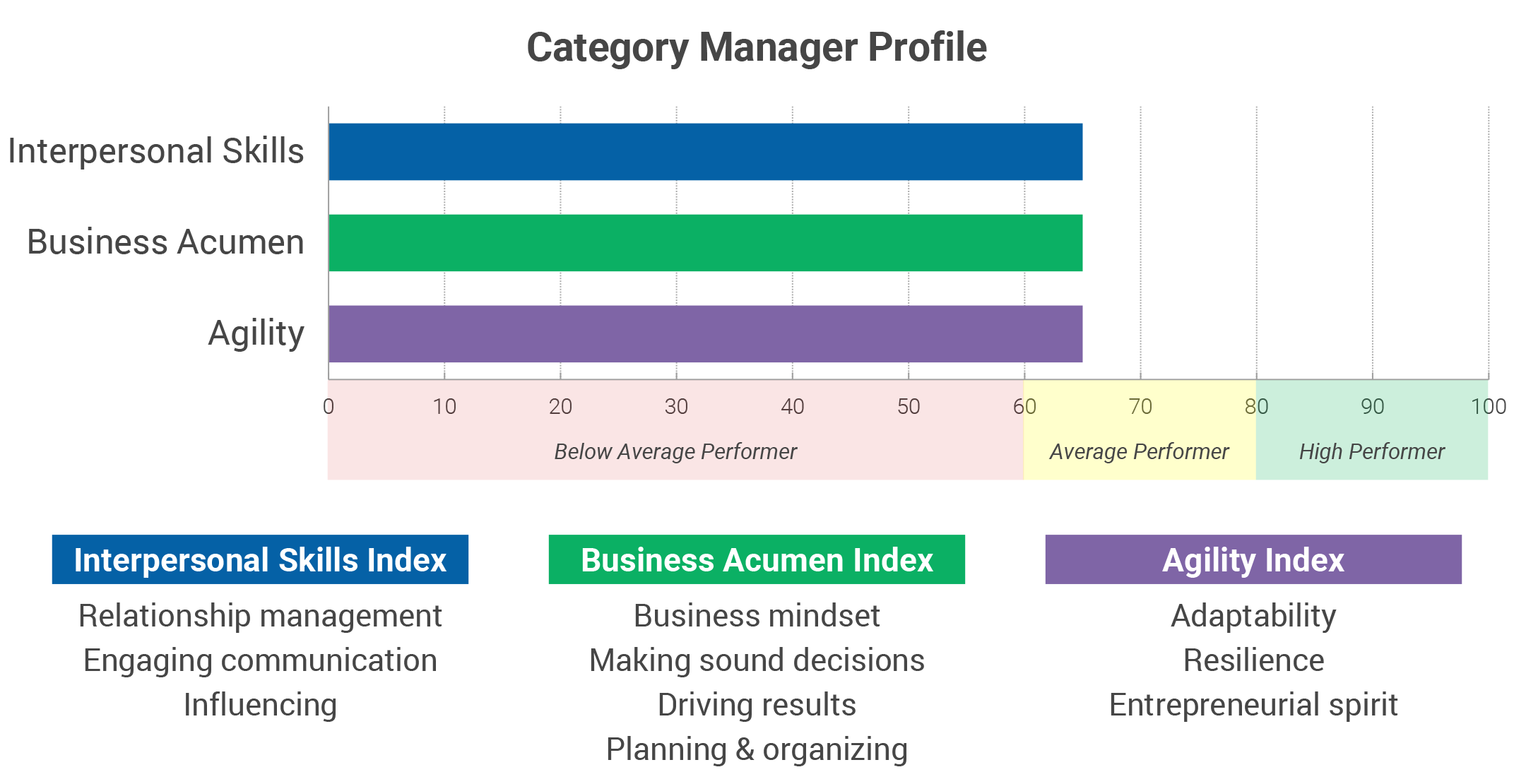Connecting Category Management Decisions and Business Outcomes:
The NACS Category Management Steps in Action
Abstract
Insight Experience partnered with a client to upgrade an existing category management training program to include an interactive business simulation experience, which immerses participants in a real and relevant scenario and reinforces the six steps of category management as defined by the National Association of Convenience Stores (NACS). More than 200 category managers in both North America and Europe have completed the simulation experience.

Challenge
Two major convenience brands had intact category management training that lacked an engaging and experiential component and sought learning that promotes the development of category management skills by requiring participants to practice, apply, and build new skills; share perspectives; compare outcomes; and understand the steps of the category management process.
Solution
Insight Experience partnered with the retailers to design a simulation experience that maps to the six steps of category management as defined by the NACS (National Association of Convenience Stores). The business simulation experience, which aggregates the steps of category management and provides iterative learning in a realistic business context, both increased the capabilities of those assuming roles in category management and refined the skills of more seasoned category managers. As a result of this robust, interactive experience, the managers made the connection between their category management decisions and the business outcomes they drive.
As a result of the program, participants develop and learn skills to:
- Translate observations into strategies and tactics to achieve the desired category plan outcome.
- Identify and recognize performance opportunities/issues that need further examination or analysis.
- Formulate key strategies and tactical recommendations that can be implemented by the retailer.
- Create a concise presentation of results, opportunities, and recommendations to be presented to the other teams.
- Demonstrate knowledge and understanding of the six steps of category management.
Program Design
To date, this simulation has been developed and delivered to allow participants to practice managing either a beer category, a confectionary category, or a pack beverage category. Insight Experience’s flexible platform enables efficient customization of the category that participants must manage. Notably, the pack beverage experience is designed for a European audience, and all financials are in Euros.
Program Agenda
This simulation is designed to integrate into an existing category management training program.
Thus far, this simulation has been incorporated into a five-day virtual training design as well as a three-day in-person design. Approximate simulation timing is as follows:
- Round 1: 45 minutes.
- Round 1 learning discussion: 15-30 minutes.
- Round 2: 45 minutes.
- Round 2 learning discussion: 15-30 minutes.
- Round 3 and presentation working session: 2-3 hours.
- Final learning discussion: 30-40 minutes.
Simulation Overview
In this simulation experience, participants work in teams of five to six. They take on the role of a category manager for a large convenience story chain with more than 5,000 locations. Historically, this chain enjoyed strong market share but is losing market share to other national and regional convenience stores. In particular, it sees declining performance in the category that teams are managing (either beer, confectionary, or pack beverage). Simulation teams are tasked with improving category performance by improving market share — while minimizing the impact on bottom-line profits.
Simulation teams work through the six steps of category management, as defined by the NACS, during three rounds of the simulation. In the course of decision-making, teams must analyze and process vast amounts of data, make a supplier selection choice, complete a SWOT and USED analysis, make merchandising decisions, and manage urgent issues. Teams must clearly and concisely outline their plans for turning around the category by highlighting how their strategic and tactical plans align — and the rationale for each. The experience culminates with a category-plan presentation that is integrated into the final simulation results.

Simulation teams are measured via a Category Manager Profile, a scorecard, and a simple P&L to help category managers understand how their category plans and decisions impact business results. Ultimately, simulation teams can impact the below list in the course of decision-making:
- Category Manager Profile (Competencies).
- Vendor Relationships.
- Operations Partnership.
- Customer Impact.
- Market Share.
- Profit & Loss.

Mirroring reality, all of the category managers' choices have impacts: Managers must review data and insights and make trade-offs. Their choices impact their competencies, partnerships, customer experience, and business results.
History and Results
This simulation has been leveraged by two major convenience brands with audiences in both North America and Europe. More than 200 category managers have completed the simulation experience. Here is what some participants have said about this program:
- “The simulation offered us imaginative insight into the performance of the category managers.”
- “[The simulation] provided a hands on approach to CM and allowed for conversations, rationales, and decision making with measurable results at the end.”
- “The process of doing the simulation is the best way to learn.”
- “We all got the same assignment, yet the results of the final presentation were very different. It is interesting how people who have received the same information interpreted it differently and [came] up with different end results.”
- "[I appreciated the] initial stages as this is exactly how the business planning is approached (role/class/generic strategy).”










